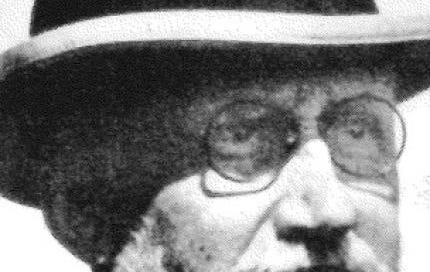On a sweltering September day in 1895, thousands of visitors to Coney Island lined up to try Jesse Reno's newest attraction. For a penny, they could ride his "inclined elevator" – a moving wooden belt set at a 25-degree angle that carried passengers upward for seven feet. The ride lasted only seconds, but it sparked a revolution in human movement that would transform architecture, commerce, and urban life.
The Accidental Innovation
Jesse Reno hadn't set out to revolutionize transportation. Born in 1861 in Fort Leavenworth, Kansas, he studied engineering at Lehigh University before working on railroad projects in Colorado and Chile. His initial goal was to create a new amusement park attraction. The inspiration came from watching people struggle up the stairs at elevated train stations.
The novelty ride he created used a continuous belt of wooden slats driven by a steam engine. Unlike earlier attempts at moving stairs, Reno's design incorporated two crucial innovations: a continuous loop of steps and a comb plate where passengers stepped off. These features, still used in modern escalators, made the system both safe and practical.
From Amusement to Infrastructure
While visitors saw entertainment, retailers saw opportunity. Department store magnate R.H. Macy was among the first to grasp the escalator's commercial potential. In 1902, he installed Reno's system in his Herald Square store. The impact was immediate – upper floors, previously difficult to reach, became prime retail space.
Reno's patent (#25,076) described his invention as an "endless conveyor or elevator." The name "escalator" came later, combining "scala" (Latin for steps) with "elevator." The term became so ubiquitous that in 1950, the U.S. Patent Office ruled it had become a generic term, stripping Otis Elevator Company of the trademark.
Transforming Retail and Architecture
The escalator's impact on commerce was revolutionary:
Made multi-story retail practical for first time
Enabled development of modern department stores
Created continuous flow of shoppers between floors
Allowed architects to design larger, taller retail spaces
Transformed basement and upper levels into valuable retail space
Department stores became "customer circulation machines," with escalators central to their design. The continuous flow of people changed not just how people shopped, but how retail spaces were designed and merchandised.
Reshaping Cities
Beyond retail, escalators reshaped urban infrastructure:
Enabled deeper subway stations
Made elevated train platforms more accessible
Facilitated development of multi-level urban spaces
Created new possibilities for public transportation
Allowed expansion of underground pedestrian networks
Cities like London and Paris used escalators to build deeper subway systems. Montreal developed its underground city, with miles of climate-controlled pedestrian tunnels connected by escalators. The technology helped create three-dimensional urban spaces that would have been impractical with stairs alone.
Technical Innovation
Reno continued improving his invention:
Developed curved escalators for irregular spaces
Created spiral designs for compact installations
Invented safety features still used today
Pioneered modular construction methods
Established basic design principles for moving stairs
His company, Reno Electric Stairways and Conveyors, eventually merged with Otis Elevator Company, creating the dominant force in vertical transportation.
Legacy in Motion
Reno died in 1947, having lived to see his amusement ride become essential urban infrastructure. Today, escalators move over 100 billion passengers annually. The basic principles of his design remain unchanged after 125 years.
His creation enabled new forms of architecture and urban development. Modern shopping malls, transit systems, and multi-level urban spaces rely on the efficient movement of people that escalators provide. What began as a Coney Island novelty became a technology that fundamentally changed how humans navigate built environments.
The escalator's success lay in its simplicity. Unlike elevators, it provided continuous movement without waiting. Unlike stairs, it moved people effortlessly between levels. This combination proved perfect for the emerging consumer culture and growing cities of the 20th century.
Reno's story reminds us that transformative innovations can emerge from unexpected places. A fairground attraction designed to thrill visitors for a few seconds became an essential technology that shaped modern urban life. Sometimes the most influential inventions aren't those that create new capabilities, but those that remove existing limitations on human movement and interaction.
*This story was crafted with the help of AI




Interesting information. I never knew that elevator has a very old history. 1895 - that is amazing.